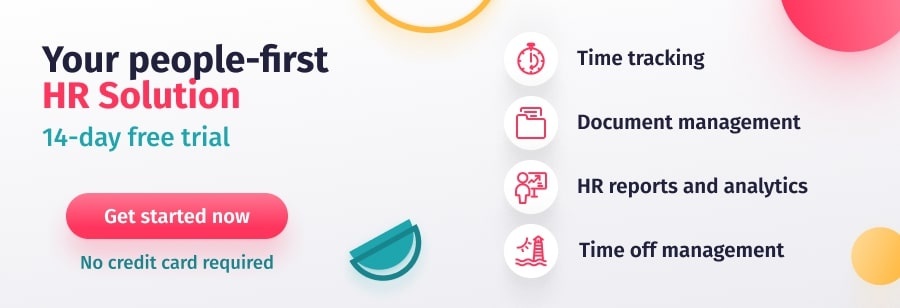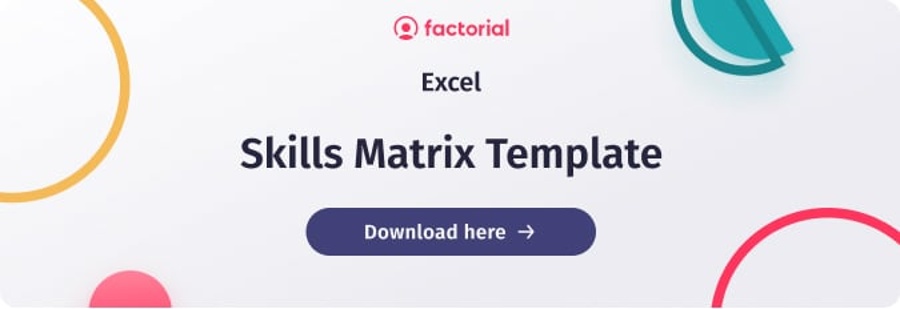

A training needs analysis is a key tool for HR professionals. It helps you establish what areas of L&D you need to focus on in order to improve the skills, knowledge, and abilities of your employees. With the data you acquire, you can build a solid foundation for developing successful training programs that help your company grow and develop. And these programs are more important than ever in our current climate. Training and reskilling your employees has become an essential tool that can help companies emerge stronger from the COVID-19 crisis.
In this article, we will discuss how to do a training needs analysis, and why training needs analysis is necessary for companies to succeed. We will also break down the various steps involved in a typical TNA process to help you implement a program that addresses the true needs of your organization.
A training needs analysis (TNA), also known as a training needs assessment, is a process that organizations use to determine the gap between the current and desired knowledge, skills, and abilities of employees.
The information you gather during a training needs analysis helps you get a bird’s eye view of your company and determine which areas of learning and development you need to focus on in order to improve overall performance. In other words, the process enables you to identify the knowledge, skills, and abilities your employees are currently lacking in relation to your goals as a company. You can then use this information to design an effective development plan for employees.
An effective TNA addresses questions such as:
Now that we’ve addressed the question “what is organizational analysis in training need assessment?”, let’s look at some of the benefits of implementing a process for analyzing your current and future training needs:
Before we share an example of the TNA process to help you create your own, let’s take a look at a few tips and best practices to keep in mind.
Let’s finish by looking at a training needs analysis example.
For your training needs analysis to be effective, you need to break your training needs analysis process model down into four key stages.
The best way to ensure you cover all bases is to use a training needs analysis template (also known as a training needs assessment template). This will serve as a handy checklist that helps you stay organized so that you can get the most from your L&D initiatives.
Take a look at the following example of what you should be including in each of the four key stages.
The first step, before you conduct your employee needs analysis, is defining your organizational goals. What do you hope to get from the process? You should obviously focus on measurable outcomes like financial performance, revenue, profit, and share price. However, you should also consider softer outcomes like customer satisfaction and organizational culture.
A great place to start is by asking yourself the following questions:
What is your organization trying to achieve in terms of overall objectives?
Which of your organizational goals require the biggest change in employee behavior?
Are any of your departments lagging considerably behind others in terms of goal progress?
What about individual performance goals – are there any areas of concern stopping you from achieving your organizational goals?
The next step is matching your organizational goals with specific issues in your company. This involves observation and assessment. The best way to do this is to get your departmental managers involved. Get them to hold interviews and conduct employee surveys to help them identify areas of concern in terms of L&D. A training needs assessment questionnaire can be a great tool. It can help you find out what areas your employees feel they need more training, support, and resources.
You should also evaluate as much data as you can to establish if there are any common issues that training can address. Your HR records are probably full of valuable information. Look at your exit interviews and performance evaluations to see if you can spot any patterns or trends.
Finally, take a look at your company culture. Are there any cultural cues that might be reinforcing undesirable behaviors that prevent you from reaching your organizational goals? What else might be having a negative influence?

The third step in the process is defining the specific skills you need to get where you want to be. The more specific you can be here, the more effective your training programs will be. And with the right training, you’ll nurture the behavior you want to see and hit your goals in the future.
Remember that not everyone will need the same training. Your finance department will obviously need a very different set of skills, knowledge, and abilities than your sales team. Make sure you identify specific needs for each individual in your company, or at least at a departmental level.
The final stage is to develop your training program. Aside from training content, you also need to set training timelines and establish your priorities in line with your budget.
What are your goals and how quickly do you need to get there? What format will you use to provide training? And how will you monitor the effectiveness of your L&D programs to ensure the training you provide is helping you reach your organizational goals?
There are a number of techniques you can use to keep track of the progress of your employees. You can use more traditional organizational surveys and interviews, or more advanced analytical techniques such as data mining.
If you’re just starting out, then the best tip here is to keep it simple. Use an Excel spreadsheet such as Factorial’s free skills matrix template to see how your team members have developed, assess their level of interest in learning particular skillsets, and compare learned competencies with overall objectives. This is the best way to monitor how effective your training is and whether your training needs analysis is helping you reach your goals.

Cat Symonds is a freelance writer, editor, and translator. Originally from Wales, she studied Spanish and French at the University of Swansea before moving to Barcelona where she lived and worked for 12 years. She has since relocated back to Wales where she continues to build her business, working with clients in Spain and the UK. Cat is the founder of The Content CAT: Content And Translation, providing content development and translation services to her clients. She specializes in corporate blogs, articles of interest, ghostwriting, and translation (SP/FR/CA into EN), collaborating with a range of companies from a variety of business sectors. She also offers services to a number of NGOs including Oxfam Intermón, UNICEF, and Corporate Excellence - Centre for Reputation Leadership. For more information or to contact Cat visit her website (thecontentcat.com) or send her a message through LinkedIn.

In todays fast-paced working environment it is important for all employers to understand what a discretionary policy is and what its benefits or drawbacks are. [. ]
Lauren Whitford June 19, 2024
Let’s unlock the hidden potential that tracking billable and non-billable hours offers. Its commonly mistaken that you should only track hours that you can charge [. ]